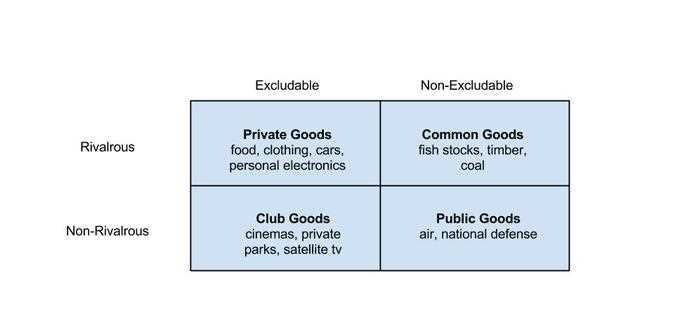What Are Public Goods?
Public goods are goods or services that are provided by the government or other public entities for the benefit of society as a whole. These goods are non-excludable, meaning that once they are provided, it is difficult to exclude anyone from enjoying their benefits. They are also non-rivalrous, meaning that one person’s consumption of the good does not diminish its availability for others.
Public goods can take many forms, including infrastructure projects such as roads, bridges, and public transportation systems. They can also include public parks, libraries, and museums. These goods are typically funded through taxes or other government revenue sources.
One of the key characteristics of public goods is that they provide benefits to society as a whole, rather than just to individuals or specific groups. For example, a well-maintained road benefits not only the individuals who use it, but also the businesses that rely on it for transportation of goods and services, and the overall economy by facilitating trade and commerce.
Public goods are often provided by the government because they are considered to be essential for the functioning of society. They help to promote economic growth, improve quality of life, and ensure the well-being of citizens. Without public goods, many essential services and amenities would not be available or would be prohibitively expensive for individuals to access on their own.
However, the provision of public goods can also present challenges. Because they are non-excludable, there is a risk of free-riding, where individuals or groups benefit from the goods without contributing to their provision. This can create a collective action problem, where it is difficult to incentivize individuals to contribute their fair share towards the provision of public goods.
Definition, How They Work, and Example

Public goods are goods or services that are provided by the government or a public entity for the benefit of the general public. These goods are non-excludable, meaning that once they are provided, it is difficult to exclude anyone from benefiting from them. They are also non-rivalrous, which means that one person’s consumption of the good does not diminish its availability to others.
Public goods are typically funded through taxes or government revenue and are provided to ensure the overall well-being and welfare of society. They often include essential services such as national defense, public infrastructure, and public education.
How do public goods work?

Public goods are provided by the government or a public entity and are accessible to all members of society. Unlike private goods, which can be owned and controlled by individuals or organizations, public goods are owned collectively by the public. This means that no one individual or group can exclude others from using or benefiting from them.
Public goods are funded through various means, such as taxes, government subsidies, or user fees. The government collects revenue from the public and allocates it towards the provision of public goods and services. This ensures that the costs of providing these goods are distributed among the entire population, rather than being borne by a select few.
Example of a public good
A common example of a public good is street lighting. Once street lights are installed, they provide illumination to everyone in the area, regardless of whether they contribute to the cost of installation and maintenance. The benefits of street lighting, such as increased safety and visibility, are enjoyed by all members of the community.
Another example is public parks. Parks are open to the public and provide recreational spaces for everyone to enjoy. They are funded through taxes and maintained by the government, ensuring that they remain accessible to all members of society.

Emily Bibb simplifies finance through bestselling books and articles, bridging complex concepts for everyday understanding. Engaging audiences via social media, she shares insights for financial success. Active in seminars and philanthropy, Bibb aims to create a more financially informed society, driven by her passion for empowering others.
